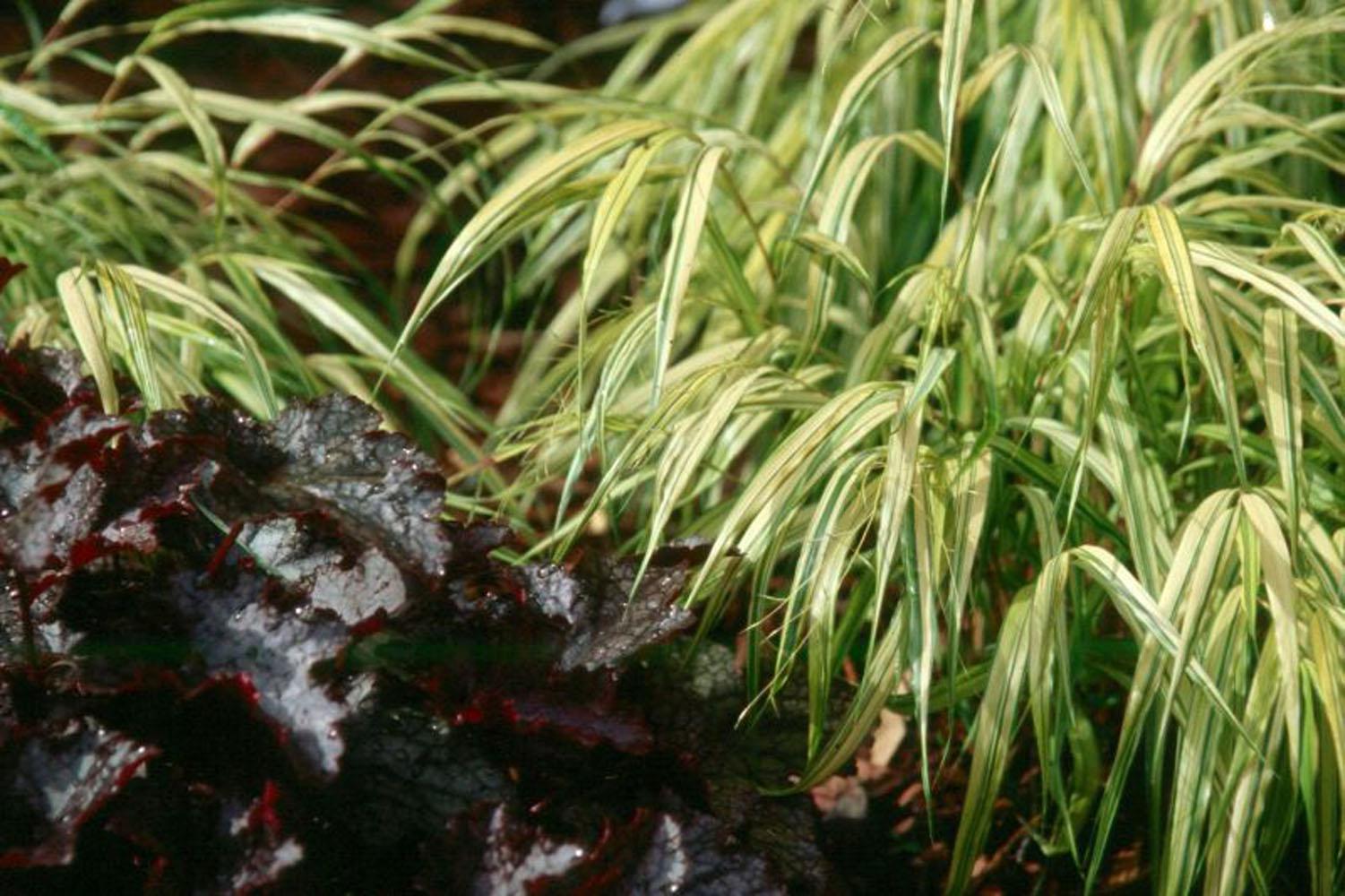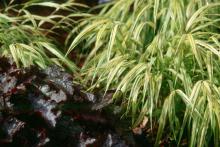Information Possibly Outdated
The information presented on this page was originally released on January 15, 2004. It may not be outdated, but please search our site for more current information. If you plan to quote or reference this information in a publication, please check with the Extension specialist or author before proceeding.
Golden Hakone grass looks hot for spring
By Norman Winter
MSU Horticulturist
Central Mississippi Research & Extension Center
To be perfectly honest, I like the 70-degree days we had around New Year's Day, and I loathe the low-20s that followed. A two- or three-week winter would suit me fine because I am ready to dig in the dirt.
One of the plants high on my agenda is Golden Hakone grass, known botanically as Hakonechloa macra aureola, which reaches 12 to 14 inches in height. This grass is sure to be hot and may very well be the one that gets you hooked on ornamental grass. The golden, weeping texture of this grass is eye-catching in any garden.
One truly outstanding planting I recently saw in Atlanta used it adjacent to a purple-leafed heuchera. For optimal Southern performance, grow the Golden Hakone where it gets some morning sun but shade protection in the afternoon.
Growing ornamental grass like the Golden Hakone is a lot easier than you think. Plant so that its size and elegant form stand out. More important with ornamental grasses than almost any other plant is to remove competing vegetation before planting. Many disgruntled gardeners have seen aggressive Bermuda grass or vines make themselves at home in an ornamental grass clump.
Apply a non-selective herbicide or remove with a hoe. A second herbicide application may be necessary.
Plant the Golden Hakone grass in loose, well-prepared beds rich in organic matter. Incorporate 3 to 4 inches of peat or compost to improve drainage and aeration. While tilling, add 2 pounds per 100 square feet of a 12-6-6 slow-release fertilizer with minor nutrients.
Plant at the same depth they are growing in the container, placing the crown of the plant slightly above the soil line. Water the grass thoroughly after planting to remove any air pockets and to settle the soil. Add a good layer of mulch after planting to prevent a rapid loss of moisture from evaporation and to prevent weeds.
Cut back the grass in February before any new growth has begun. Trim back to just above ground level almost like you would do a variegated liriope. After cutting back, side-dress with an application of the 12-6-6-fertilizer, then again in midsummer. Keeping the bed well-mulched and watered during the summer pays off with a healthier, happier plant.
Using an ornamental grass like the Golden Hakone does not require a design school education. The use is almost as simple as digging a hole, planting the grass and tucking in few of your other favorite plants with the same light and soil requirements. I've already mentioned purple-leafed heuchera or coral bells. Also try blue-leafed forms of hosta, blooming vinca, violets, coleus and lilac to violet selections of impatiens.
We may have a while yet to go, but we can pass the wintry days making plans for the planting season. I urge you to include Golden Hakone grass in your landscape designs.








